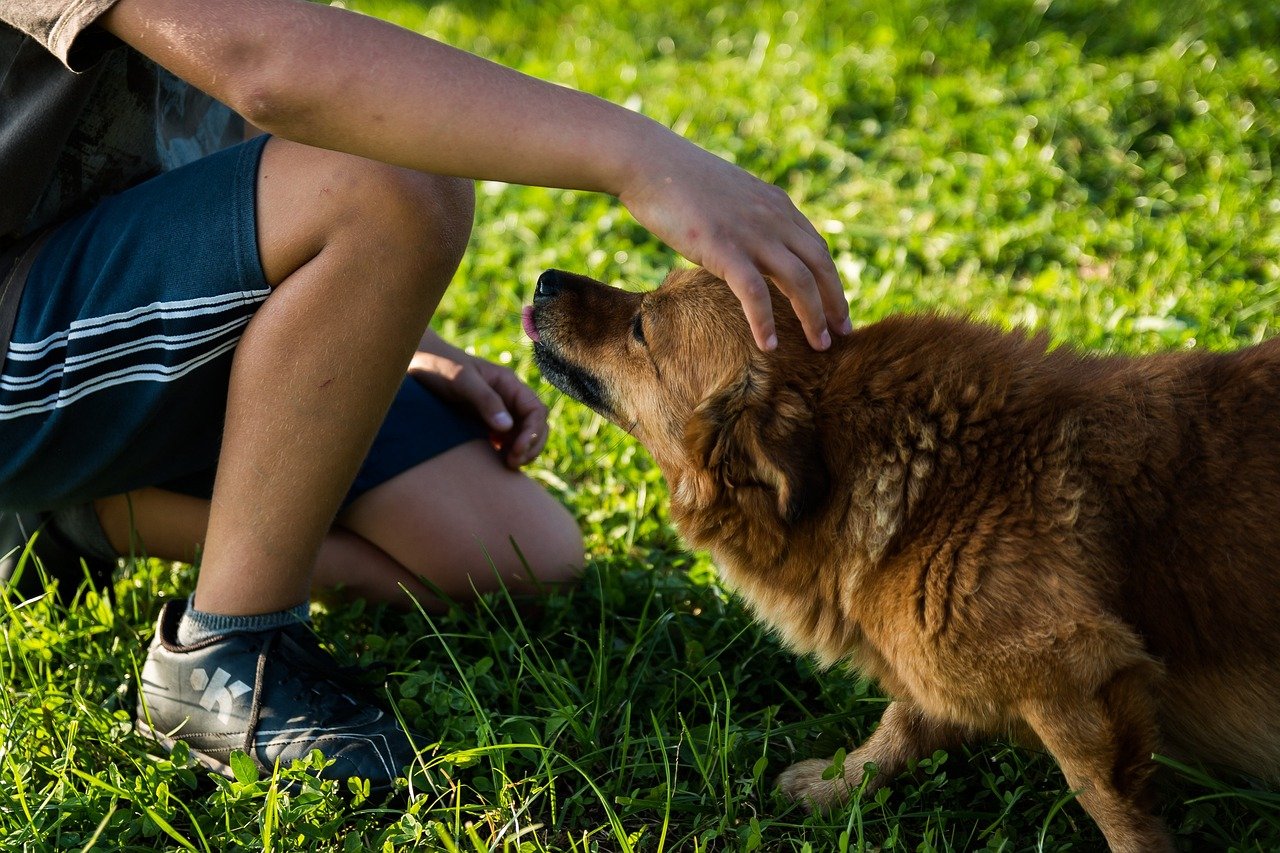Your dog isn’t just following you around—they’re actually tuning into your emotional frequency. Dogs are masters at reading subtle body language, facial expressions, and even changes in your scent when you’re stressed or sad. Their loyalty isn’t just about companionship; it’s a deep, intuitive bond that lets them act as furry emotional barometers. Studies show dogs can detect cortisol levels and respond with comforting behaviors. Whether you’re beaming with joy or silently struggling, your dog likely knows before you even say a word. It’s why they cuddle close on hard days or get extra goofy when you’re happy. Their emotional intuition is a beautiful reminder that love doesn’t always need words.
The Ancient Bond Between Humans and Dogs
Dogs and humans have been companions for thousands of years. This long partnership has shaped both species in profound ways, especially when it comes to understanding each other. Early humans and dogs relied on each other for survival—dogs helped hunt and guard, while humans provided food and shelter. Over generations, this bond grew deeper, creating a unique connection built on trust and subtle communication. It’s almost as if we’ve evolved to understand each other on an instinctive level.
Today, that ancient bond lives on in every wagging tail and soulful gaze. When you look into your dog’s eyes, you’re connecting with a legacy that stretches back to prehistoric times. This deep-rooted relationship explains why dogs are so in tune with our feelings, often picking up on cues that even our closest friends might miss. It’s no wonder we call them our best friends—they’ve been with us through thick and thin, learning to read our hearts as well as our faces.
How Dogs Read Human Emotions
Dogs are expert observers. They watch our movements, listen to the tone of our voices, and even notice the smallest shifts in our body language. Unlike most people, who might overlook a sigh or a slumped posture, dogs are quick to catch these subtle signs. This ability is part instinct, part learned behavior, and it helps them respond to our emotional states, whether we’re joyful or down in the dumps.
What’s truly fascinating is that dogs don’t just react to what we say—they react to how we feel. Studies suggest that dogs can distinguish between happy, sad, angry, and fearful emotions by looking at our faces. They even seem to understand when our feelings are mixed. So, the next time your pup nudges you when you’re upset, remember: they’re reading you like an open book, and they care deeply about what they see.
The Power of Scent: Dogs’ Secret Superpower
While we humans rely heavily on sight and sound, dogs experience the world through their noses. Their sense of smell is up to 100,000 times more sensitive than ours. This extraordinary ability lets them detect the chemical changes that occur in our bodies when we experience different emotions. For example, when you’re stressed or anxious, your body releases certain hormones that your dog can smell.
This “emotional scent” is a secret language between you and your dog. Even when you try to hide your feelings, your dog knows what’s going on at a biological level. It’s no exaggeration to say that your dog can sniff out your mood—literally. That’s why they might come over for a cuddle when you’re blue or get excited when you’re bursting with happiness.
Body Language: The Canine Decoder

Dogs are masters at reading body language, not just in other dogs, but in humans too. They pay close attention to our gestures, posture, and facial expressions. Something as simple as crossing your arms, avoiding eye contact, or shifting your weight can send a clear signal to your dog about how you’re feeling.
Unlike people, who may misinterpret or ignore nonverbal cues, dogs are constantly tuned in. They notice when you’re tense, relaxed, or anxious, and they adjust their behavior accordingly. If you’re upset, your dog might lower their head, offer a paw, or lean against you—simple gestures that say, “I’m here for you.” Their ability to understand our unspoken language is nothing short of remarkable.
Vocal Tones: More Than Words
It’s not just what we say, but how we say it that matters to our dogs. Dogs are incredibly sensitive to changes in our vocal tone. A cheerful, upbeat voice can spark excitement, while a quiet or shaky tone might make them concerned. They learn to associate certain sounds and inflections with specific emotions, responding in ways that show they’re truly listening.
This sensitivity to our voices helps dogs provide comfort when we need it most. If you’ve ever whispered your troubles to your pup and felt them snuggle closer, you’ve experienced their unique ability to pick up on emotional undertones. Their response isn’t just instinct—it’s a heartfelt reaction to the emotional music in your words.
Empathy: Dogs’ Emotional Intelligence
Empathy in dogs is a real phenomenon. They don’t just sense our emotions—they often share them. When you’re sad, your dog might seem downcast too; when you’re happy, they bounce around with joy. This emotional mirroring is a form of empathy that goes beyond simple observation.
Some scientists believe that dogs have developed emotional intelligence as a way to strengthen their bond with humans. By tuning into our moods and responding appropriately, they become true companions, offering support and comfort when we need it most. It’s a gift that many people wish their human friends possessed in equal measure.
Dogs vs. Humans: Why Pups Outshine People

Let’s face it—people are busy, distracted, and sometimes preoccupied with their own worries. Even the most caring friends and family members can overlook our emotional needs. Dogs, on the other hand, are always present. Their whole world revolves around us, and they never judge or hold grudges.
Unlike humans, dogs don’t get caught up in overthinking or analyzing situations. They live in the moment and react purely to what they sense. This immediate, nonjudgmental presence allows them to offer comfort and support without any strings attached. In many ways, their simple, honest reactions put human empathy to shame.
Training and Experience: Learning to Read You

While dogs are naturally attuned to our feelings, experience and training can make them even better at sensing our moods. Dogs who spend a lot of time with their owners learn to recognize individual patterns and routines. Over time, they become experts at predicting how you’ll react to different situations.
Some dogs are even trained to assist people with specific emotional needs, such as anxiety or PTSD. These therapy dogs can recognize the early signs of distress and intervene before things get worse. But even without formal training, your dog is constantly learning from you, becoming more attuned to your unique emotional landscape every day.
Examples of Dogs Responding to Emotions
There are countless stories of dogs doing remarkable things in response to their owners’ emotions. Some dogs have been known to alert family members when someone is about to have a panic attack. Others sit quietly beside a grieving person, offering silent companionship in moments of deep sorrow.
Even in everyday life, dogs show their sensitivity. They might greet you with extra enthusiasm after a tough day or refuse to leave your side when you’re feeling low. These small acts of kindness add up, reminding us just how closely our dogs are tuned to our hearts.
Why Dogs Never Judge
One of the most comforting things about dogs is their complete lack of judgment. No matter what kind of day you’ve had, or how you’re feeling, your dog accepts you just as you are. They don’t care about your mistakes, your mood swings, or your insecurities. To them, you are perfect.
This unconditional acceptance is a rare gift in a world where people often feel misunderstood or criticized. With your dog, you can let your guard down and be truly yourself. Their loyalty and love are unwavering, making them the ultimate confidants.
How Dogs Help Us Heal

The emotional support dogs provide isn’t just heartwarming—it’s also healing. Spending time with your dog can lower stress, reduce anxiety, and even improve your physical health. Petting a dog releases oxytocin, the “love hormone,” which boosts mood and strengthens the bond between you and your furry friend.
For people dealing with loneliness, depression, or trauma, a dog’s companionship can be life-changing. Their presence offers comfort and hope, reminding us that we’re never truly alone. In many ways, dogs are natural healers, mending hearts with every wag and nuzzle.
Building a Stronger Bond With Your Dog

While dogs are naturally gifted at reading our emotions, we can nurture and strengthen this connection through time and attention. Regular play, walks, and cuddles deepen your bond, making your dog even more responsive to your moods. Training and positive reinforcement also help your dog understand what you need from them.
The more you invest in your relationship with your dog, the more they’ll invest in you. It’s a beautiful cycle of trust and affection—one that grows stronger with every shared moment. As you learn to read each other’s signals, you’ll find that your dog’s understanding of your moods only deepens.
The Joy of Being Understood
There’s something profoundly reassuring about knowing your dog understands you on a level that words can’t reach. In a noisy, complicated world, their quiet presence cuts through the chaos, offering comfort and connection. When your dog senses your mood, it’s a reminder that love doesn’t always need an explanation—it’s felt, deeply and truly.
So, the next time your dog curls up beside you during a tough day or nudges you with a toy when you’re smiling, know it’s not a coincidence—they’re tuned in to your emotions in a way that’s almost magical. Dogs don’t just live with us; they feel with us. Their ability to sense our moods makes them not only great companions but also incredible emotional support buddies. It’s just one more reason why life with a dog is a little brighter, a little softer, and a whole lot more connected.






